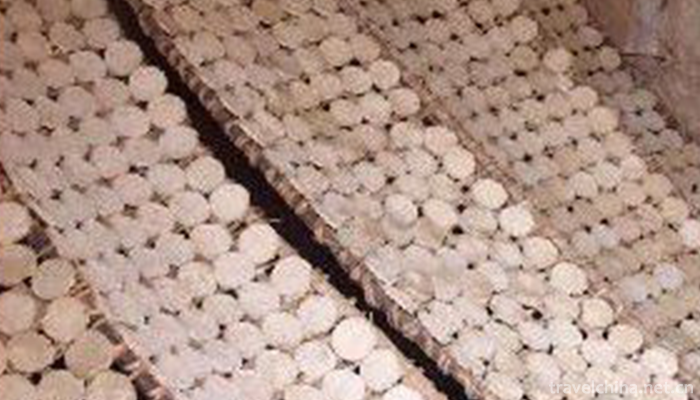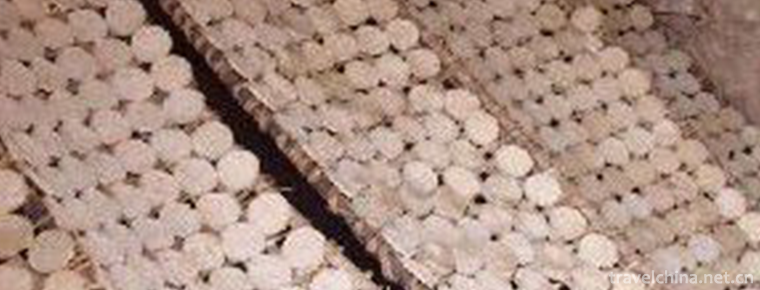Soil alkali firing technology
Soil alkali firing technology
Artemisia alkali firing soil and alkali technology, known to inherit five or six generations, has a history of more than 200 years.
On June 7, 2008, the soil-alkali firing system was approved by the State Council and listed in the second batch of national intangible cultural heritage list.
History
In 2007, Tian Xiyun, the inheritor of alkali-artemisia sintering soil-alkali technology in Xinhu farm, was invited to interpret the whole process of alkali-artemisia sintering soil-alkali technology in Xinhu farm, and the farm was made into TV and carved into CD-ROM for preservation.
According to historical records, Xinjiang has a dry climate and a high content of saline-alkali soil. A wild plant, Artemisia alkali, is alkali-tolerant, drought-tolerant, and has strong vitality. It spreads or flocks around the alkali lake and on the saline-alkali patches. It can form a pure community and is also a companion species of other halophyte communities. Local people found that Artemisia alkali can be used not only as firewood and retting fertilizer, but also as soil and alkali. Soil alkali can wash clothes, wash hands and remove grease stains. It can also be manually kneaded with noodles to make gray noodles. People can easily digest gray noodles when they eat them. Soil alkali can not be replaced by edible alkali sold in the market.
raw material
The tender seedlings of Artemisia alkali are commonly known as "wolftail (yx) bassiana", "Artemisia alkali", "Artemisia salina". Annual herbs have erect stems, cylindrical, 30-100 cm high. Flowers are solitary or 2-3 stalks clustered on the short stalks of axillary leaves, which are umbrella-shaped. The perianth is pentagonal star-shaped in fruit stage. They are typical halophytes. Artemisia alkali is salt-loving and humid, its stem and leaf are fleshy, and there is a large amount of water in the leaves, so it can endure temporary drought. The dormancy period of seeds is very short. When suitable conditions are met, seeds can germinate and grow quickly. When young, pigs eat less of their leaves, and cattle and horses generally do not eat. Seeds are rich in oil and can be used as soap and paint. It can be used in printing and dyeing, glass industry and raw materials of chemical industry.
Intangible cultural heritage
It has been handed down orally or by way of action by human beings. It has national historical accumulation and extensive and representative folk cultural heritage. It was once known as the "living fossil" of historical culture and the "background of national memory".
The biggest characteristic of intangible cultural heritage is that it is not separated from the special way of life and production of the nation, and it is the "living" manifestation of national personality and aesthetic habits. It is the most vulnerable part of the "living" culture and its tradition, which relies on human beings, expresses itself by means of voice, image and skills, and continues through the transmission of body and mouth as a cultural chain. The second Saturday in June is designated as "Cultural Heritage Day". So far, China has already had "Cultural Heritage Day", "Cultural Heritage Symbols" and "Public Welfare Songs for Cultural Heritage Protection", which will play a very positive role in enhancing the awareness of cultural heritage protection of all the people.


-
2.Noodles with quickfried eel shreds and shelled shrimps
Shrimp fried eel noodles is a famous traditional food in Kui yuan hall, Hangzhou City, Zhejiang province. When the shrimp is cooked with fried eel noodles, select the strong fresh eel,
Time 2018-10-27 -
3.Tianshan Tianchi Scenic Area
Tianchi Mountain: World Natural Heritage, National AAAAA Class Tourist Scenic Spot, National Geopark, National Key Scenic Spot, National Civilized Scenic Spot, International and Natural Biosphere Rese
Time 2018-12-12 -
4.Zhenjiang Jinshan Temple
Jinshan Temple was built in Jinshan Mountain on the South Bank of the Yangtze River in Zhenjiang City, Jiangsu Province, at the time of Emperor Ming of the Eastern Jin Dynasty
Time 2019-03-18 -
5.Hequ folk songs
Hequ folk song is a kind of traditional folk music. Shanxi's human geographical environment has formed the "Xikou" mode of life and production in which local people return to Daqingshan and
Time 2019-05-03 -
6.The Mausoleum of the Yellow Emperor
The Mausoleum of the Yellow Emperor is one of the national intangible cultural heritages, which has formed a certain scale format and sacrificial ceremonies in the long-term practice.
Time 2019-05-04 -
7.Mongolian Matouqin Music
Horsehead Qin is a typical representative of Mongolian music culture. Whether it is its shape, production material, sound quality, timbre, music expression style and performance method, it embodies th
Time 2019-06-05 -
8.Bamboo weaving in Shengzhou
Shengzhou bamboo weaving is one of the traditional handicraft products in Shengzhou, Zhejiang Province. Shengzhou bamboo weaving technology is distributed in the bamboo producing areas of the city, in
Time 2019-06-14 -
9.Triple Drum Jump
Dancing three drums is a kind of opera which is popular in counties (cities) such as public security, Shitou, Jiangling and Songzi. It evolved from the funeral board and funeral drum song of sacrifici
Time 2019-06-21 -
10.Xinhui Sunflower Art
Xinhui Sunflower Art, a traditional Chinese handicraft, originated in Xinhui District, Jiangmen City, Guangdong Province. Xinhui Sunflower Art has a history of more than 1600 years, and became famous
Time 2019-07-06 -
11.Anhui Agricultural University
Anhui Agriculture University is located in Hefei, capital of Anhui province. Center Urban area Key universities in Anhui By Ministry of agriculture and rural People's Republic of China State Forestry
Time 2019-10-10 -
12.Suining City Construction
In 2019, Suining completed the investment of 4.991 billion yuan in municipal infrastructure construction. The green space rate of the built-up area is 34.46%, the green coverage rate of the built-up area is 39.6%, and the per capita green space area of the park is 12.42 square meters.
Time 2020-12-16